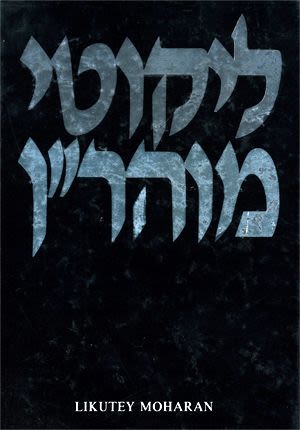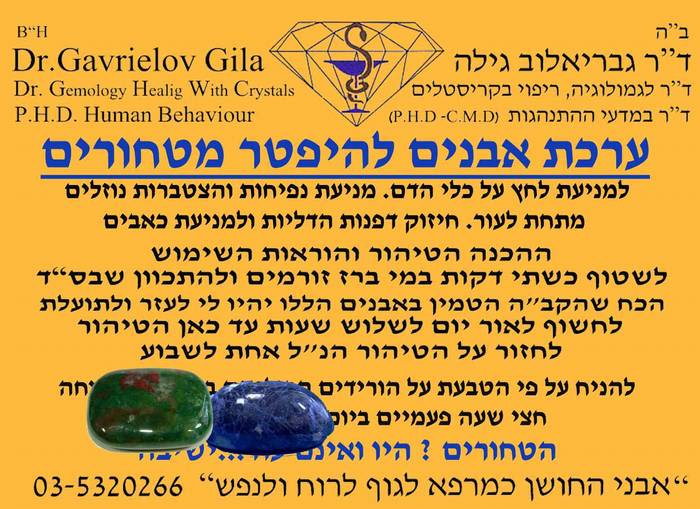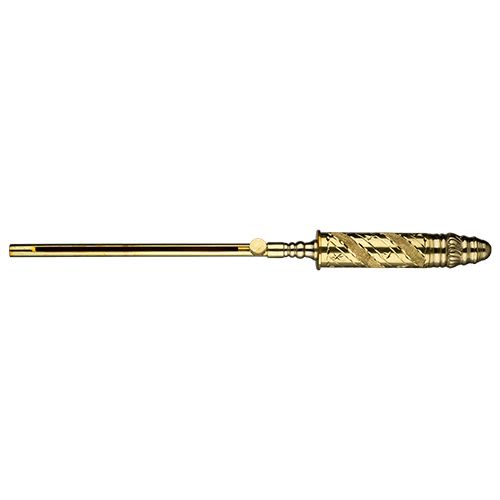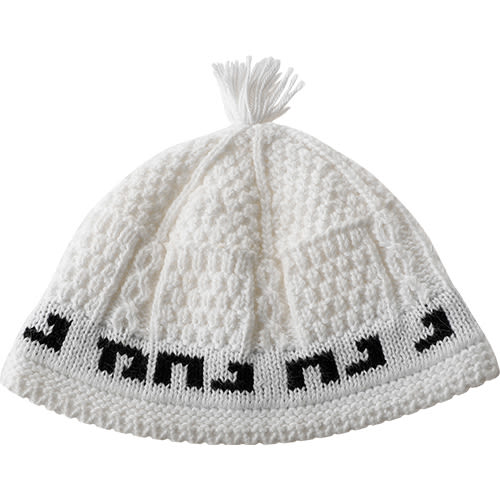
Tazria: Pain and Perfection
Parshat Tazria: A person has a small pain in his chest. The doctor tells him in no uncertain terms that the pain is a warning sign and a major change is imperative...

Parshat Tazria
A fellow comes into the doctor with a small pain in his chest. The doctor tells him in no uncertain terms that the pain is a warning sign and a major change is imperative. If the fellow is perceptive he will understand the necessity of change in diet and lifestyle.
The Torah informs us that Hashem is our Doctor and Healer (Rofecha). Sometimes He sends us small wake-up messages. However, it’s up to us to listen and take the necessary steps to heal our spiritual illnesses.
In this week’s Torah reading we are taught about a person who develops tzarat (an illness with similar symptoms as leprosy). Although this unique ailment isn’t found today, its lessons carry a wake-up call for us which is still very relevant. Let’s try to hear the Torah’s message in order to heal ourselves from this shortcoming.
We are taught in the weekly reading about a person who sees a spot or spots in which the skin and the hair in that place have turned white. After noticing the tzarat, the afflicted person goes to the priest (Kohen) to determine whether the spot or spots are, in fact, the impure blemish called tzarat. Although determining his status has many relevant laws, for our discussion, let us assume that he does have the disease and is now  considered spiritually impure. What change of habits does he need to go through in order to heal his blemish?
considered spiritually impure. What change of habits does he need to go through in order to heal his blemish?
The first step is to leave the spot just as he found it. The Torah actually prohibits the removal of this blemish. The reason being that Hashem, The Doctor, wants the person to have the the blemish before him as a reminder in order that he shouldn’t forget that he needs to heal. How often do we want to take away the “blemishes” around and within us instead of accepting these problems and learning the lessons they could teach?
The first type of tzarat mentioned in this week’s Torah reading deals with a blemish found on the skin, as mentioned before. What causes this spot and how does this deep white color reflect his shortcoming?
The Talmud tells us that tzarat is caused by a number of possible personal defects. The most common reason given reflects the fact that the afflicted person spoke negatively against other people. If the tzarat reflects negative speech, why isn’t the speaker afflicted in his speech or his mouth. Wouldn’t the message then be more obvious?
By giving the person a skin disease, “The Doctor” is telling him that his problem is not just the negative speech. His real problem is that he sees the world around him as blemished, therefore he gets a blemish. This deficiency necessitates more than a correction of speech. It requires a complete overhaul in his view of the world. Simply stated, the greatest blemish is to think that everyone around him is blemished.
Fortunately, his skin disease and the prescribed healing process can teach him what must be rectified. His skin becomes complete white, almost lifeless, and he must dwell alone outside his neighborhood until he heals. He must ask the priest (Kohen) to determine his status. All of these procedures tell him that he needs to change his basic social habits. The source of his shortcoming is that he feels greater than others and speaks accordingly. A little piece of skin “dies”, it loses its life force since someone who considers himself different and better has unplugged himself from the Jewish people. Without his Jewish community he is disconnected from life itself. He must sit outside the camp. He must go to the priest (Kohen) who the verse tells us is the one who teaches understanding. The ill individual needs to change his whole view of his relationship with the community. Until that happens, he must dwell alone, not only as a punishment, but as a way for him to feel the importance of those around him.
Interestingly, we don’t judge the status of his blemishes at the time of the Jewish Holidays. The hope is that at the time of the Holidays the Jewish people gather together to celebrate together. He has an opportunity to look around him and realize just how dependent he is on the Jewish people and to realize truly how special they are.
I had an additional thought about his dwelling outside of the community. Who else “dwells” outside the society? People who have passed away, who are no longer part of the active society. They also “dwell” outside the camp of the Jewish people. Our slanderer has cut himself off from the Jewish people. In many ways he has died by cutting himself off through his own attitude.
Again, that is also why his skin turns white. That little piece of skin becomes lifeless. If he learns the lessons of this miniature “touch” of death (nega means both a plague and being touched) he can heal himself and come back to the community. Hopefully he will have learned the lessons of the illness that separated him from the Jewish people, that his speech and his inner attitudes have distanced him from life itself.
We have a loving Father who is also our Healer. Through the Torah He tells us what needs to be healed and how to heal ourselves. May He help us hear the messages that He is sending us and help us learn the appropriate lessons to bring us closer in our connection with Him. And may we all merit a full spiritual and physical healing from all of our ailments.












Tell us what you think!
Thank you for your comment!
It will be published after approval by the Editor.